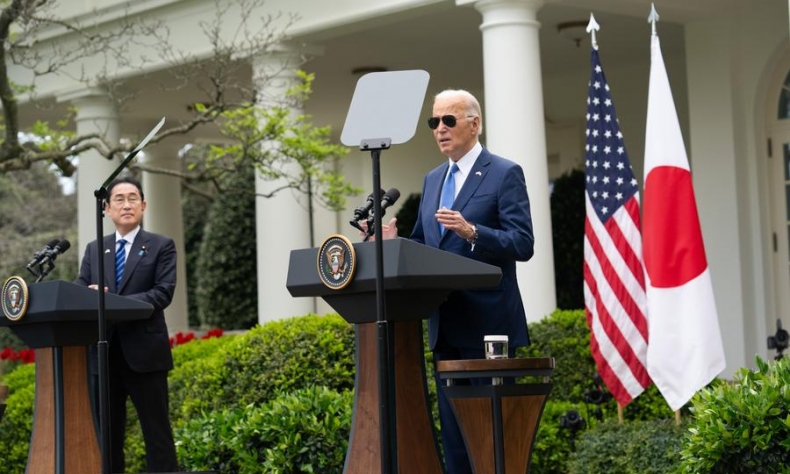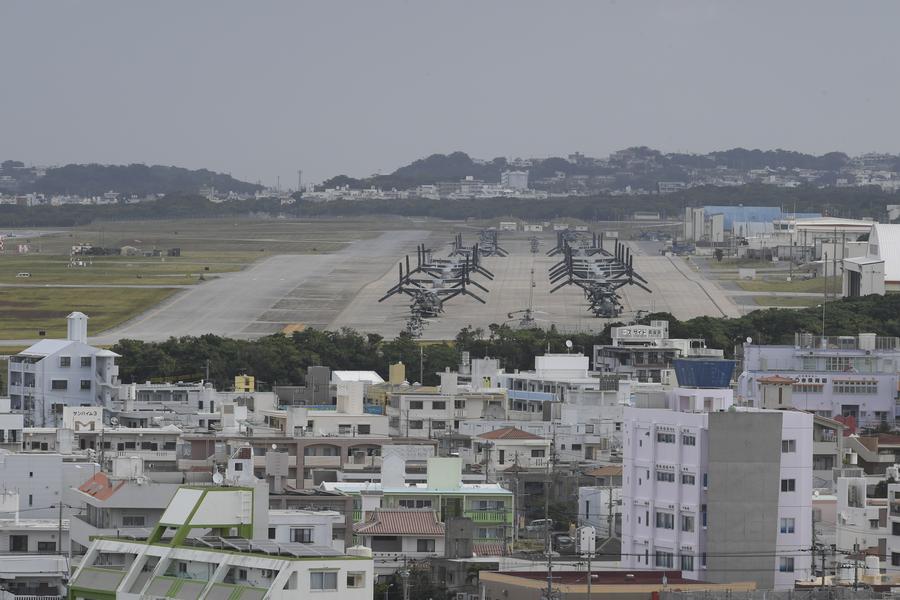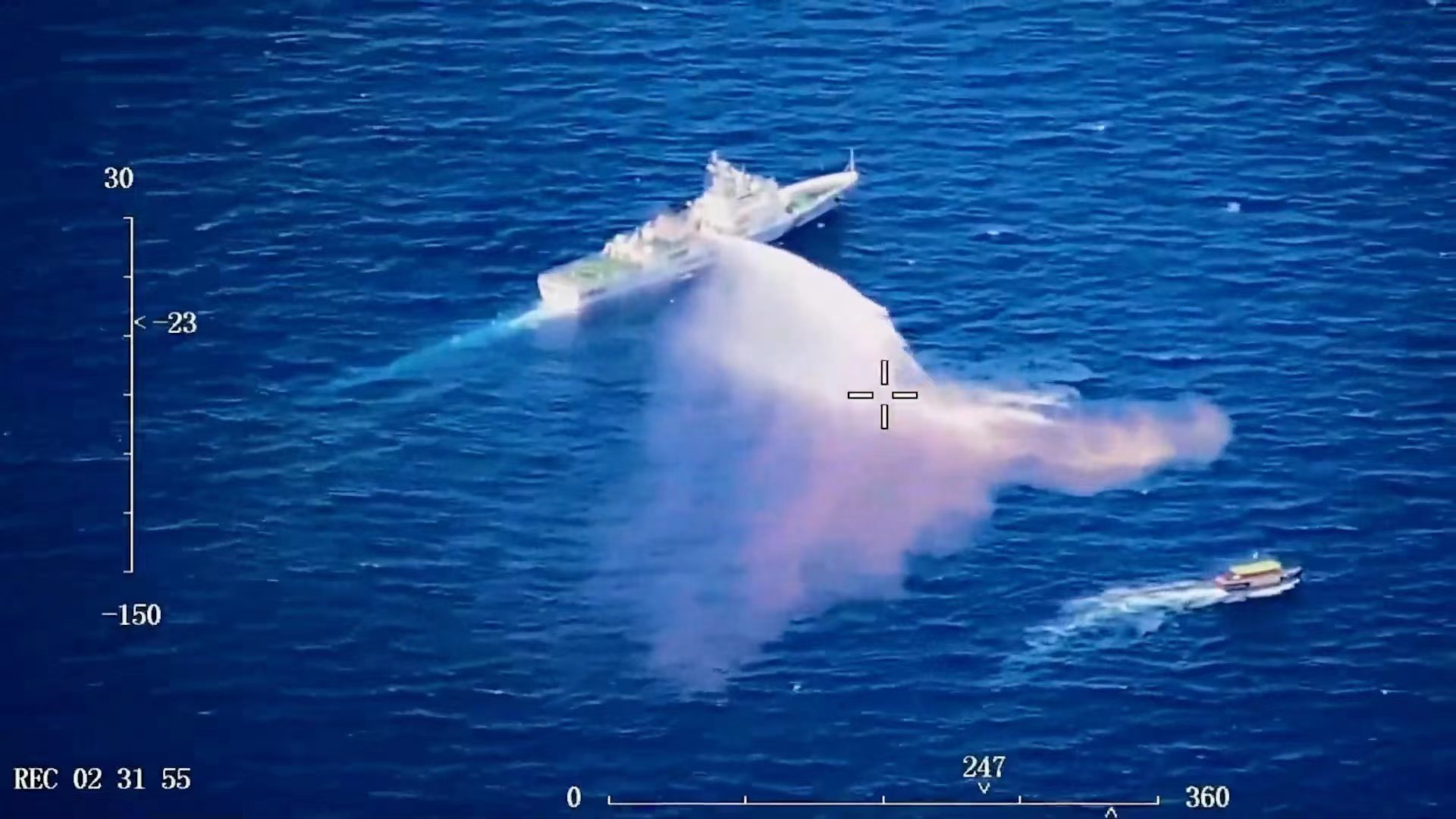The U.S. and Japan Upgrade Their Defense Alliance with an Eye on China

The interactions between the U.S., Japan and the Philippines are intended to demonstrate solidarity, but this does not mean that the security cooperation between the three parties is ironclad.
U.S. President Joe Biden and visiting Japanese Prime Minister Fumio Kishida announced a “new era” in the two countries’ alliance in Washington, D.C., on April 10.
A joint statement released by the White House after their two-hour meeting unveiled plans for military cooperation, with provocative rhetoric including narratives that challenge China’s sovereignty over the Diaoyu Islands in the East China Sea.
The meeting and the statement triggered a stern response from China.
“Despite China’s serious concerns, the U.S. and Japan attacked and smeared China on the Taiwan question and maritime issues, grossly interfered in China’s domestic affairs and violated the basic norms in international relations. China deplores and opposes it, and has made serious démarches to relevant parties,” Chinese Foreign Ministry spokesperson Mao Ning said at a press briefing in Beijing on April 11.
China firmly opposes the Cold War mentality and small group politics, and rejects anything that creates and drives up tensions or may undermine other countries’ strategic security and interests, she added.
Stronger alliance
Kishida’s visit to the U.S. is the first state visit by a Japanese leader since Prime Minister Shinzo Abe’s in 2015. As the fifth state guest during the Biden administration, following the leaders of India, Australia, the Republic of Korea and France, Kishida was welcomed with a ceremony on the South Lawn of the White House, a formal state dinner and other official events.
Biden said at a press conference after meeting with Kishida that over the last three years, the partnership between Japan and the U.S. has been transformed into a “truly global partnership,” and the two countries “are taking significant steps to strengthen defense and security cooperation.”
“The announcements from Biden and Kishida brought the two World War II enemies into the closest collaboration they have had since they became allies decades ago,” Reuters reported.
Since the rebuilding of their relations began, the U.S. and Japan have hammered out about 70 agreements on defense cooperation, including moves to upgrade the U.S. military command structure in Japan to make it better able to work with Japanese forces in a crisis.

Their militaries will cooperate with a joint command structure in the Pacific and they will, together with Australia, develop a new air missile defense network. The two leaders also announced that Japanese astronauts will participate in NASA moon missions.
The statement said AUKUS partners are considering cooperation with Japan on AUKUS Pillar II, which focuses on advanced capabilities including quantum computing, undersea warfare, hypersonic weapons, artificial intelligence and cybertechnology.
AUKUS is a trilateral strategic partnership between Australia, the United Kingdom and the United States established in September 2021. The collaboration is composed of two pillars, with Pillar I being a trilateral effort to support Australia in acquiring nuclear-powered submarines.
After Kishida left for Washington on April 9, Japanese protesters held a rally against their government’s increased military cooperation with the U.S., which they see as an irreversible path toward war.
“Japan launched aggressive wars against many Asian countries during World War II. Given Japan’s history of militarist aggression, the Kishida government’s current push for the Japan-U.S. alliance is leading Japan again to a road toward war,” a protester told China Central Television.
China as a target
Biden and Kishida also held a trilateral summit with Philippine President Ferdinand Marcos Jr. in Washington, D.C., on April 11, mainly focusing on tensions between China and the Philippines at Ren’ai Jiao reef in the South China Sea.
Ren’ai Jiao is part of China’s Nansha Qundao islands and China has indisputable sovereignty over them and their adjacent waters. But by keeping its warship grounded at Ren’ai Jiao for decades running, the Philippines has been violating China’s sovereignty and the Declaration on the Conduct of Parties in the South China Sea, especially Article 5 on refraining from “inhabiting on the presently uninhabited islands and reefs,” according to China’s Foreign Ministry.
In a joint statement released by the White House after the trilateral meeting, the three countries expressed “serious concerns” over China’s actions to safeguard its sovereignty and announced the establishment of a trilateral maritime dialogue to “enhance coordination and collective responses.”
Prior to the trilateral meeting, the three participants, along with Australia, conducted their first joint maritime exercise in waters near the Philippines on April 7.
According to Mao, the Chinese Foreign Ministry spokesperson, the reason behind the current situation at Ren’ai Jiao is very clear.

“The Philippines went back on its word and refuses to tow away the warship illegally grounded at Ren’ai Jiao,” Mao told the press briefing on April 11.
She said the Philippines denies the existence of the gentleman’s agreement reached with China under the administration of former Philippine President Rodrigo Duterte and has repeatedly infringed on China’s sovereignty in those waters and made provocations.
The Philippines has abandoned the current administration’s understandings with China on the Ren’ai Jiao issue, sent construction materials to the grounded warship for large-scale repair and reinforcement in an attempt to permanently occupy Ren’ai Jiao, Mao added.
She said if the Philippines truly wants to ease tensions at Ren’ai Jiao through dialogue and communication, it needs to honor the commitments and understandings and cease provocations.
“The interactions between the U.S., Japan and the Philippines are intended to demonstrate solidarity, but this does not mean that the security cooperation between the three parties is ironclad,” Chen Yang, a visiting researcher at the Institute of Japan Studies of Liaoning University, told Shanghai-based news portal Guancha.cn.
He said he believes the interests of the U.S., Japan and the Philippines are not entirely aligned. While the U.S. promotion of trilateral strategic cooperation aims to outcompete China, Japan’s collaboration with the U.S. to contain China aims to enhance its own status as a “political power,” despite being unwilling to risk the consequences brought about by the strategic competition between China and the U.S. As for the Philippines, its conflicts with China are limited to the South China Sea issue, and the benefits it gains from its relations with China far outweigh their disputes.
From the first trilateral summit convened between the U.S., Japan and the Republic of Korea last year, to the recent U.S.-Japan-Philippines summit, to its potential cooperation with the AUKUS partnership, Japan is increasing its engagement in a range of small multilateral mechanisms, extending its influence over both the East China Sea and the South China Sea.
In the view of Wang Guangtao, an associate research fellow at the Center for Japanese Studies at the Shanghai-based Fudan University, this is Japan’s attempt to strengthen its leadership in regional agenda setting.
“The overall relationship between China and Japan in recent years has been unstable,” Wang told Guancha.cn. “While Japan remains an important economic partner of China, there are signs of growing economic decoupling between the two nations. And Japan’s unprecedented increase in its defense budget is aimed at constraining China.”
 Facebook
Facebook
 Twitter
Twitter
 Linkedin
Linkedin
 Google +
Google +










